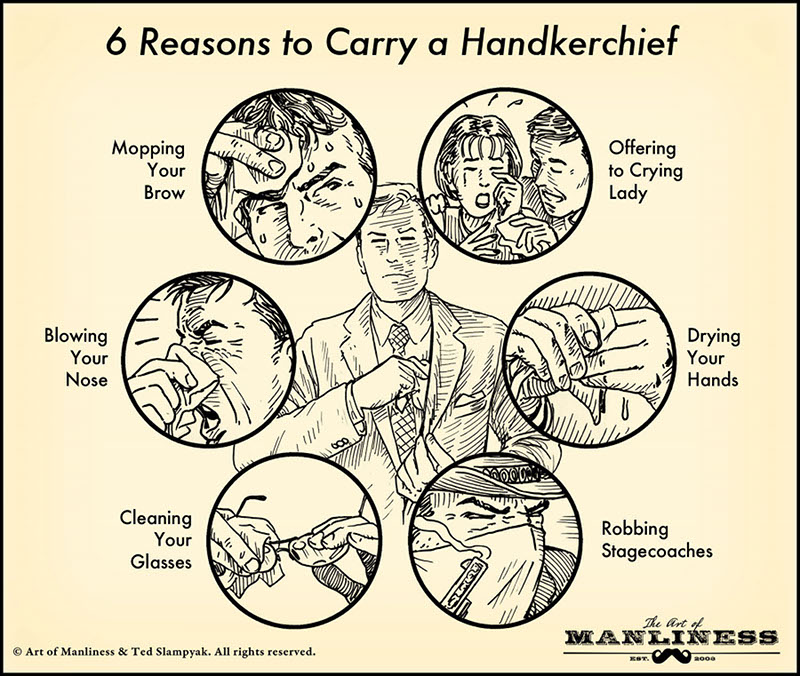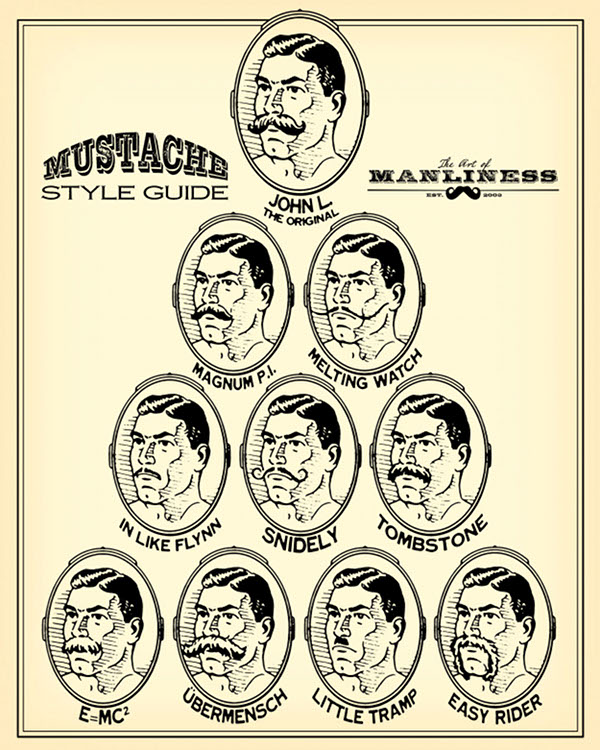
When it goes well, cultural evolution works like biological evolution: the strongest things survive, while flaws, weaknesses, and superfluities disappear.
Unfortunately, the progression of culture doesn’t follow such a linear arc. Sometimes the societal pendulum swings simply because of boredom; technological innovations push current practices into obsolescence before we’ve considered what might be lost without them; new traditions seem superior to the old, until they don’t — and by then they’ve faded beyond return.
Inspired by ideas in Let’s Bring Back, Going, Going, Gone, my conversation with Walker Lamond about his book Rules for My Unborn Son, and simply our own observations about what’s lacking in modern life, below we present 57 things that have gone extinct or been waning that would be worth reviving.
These entries haven’t been chosen based on pure nostalgia, nor the viability of their comebacks — many have a poor chance of resurrection indeed. Rather these are simply things that it would genuinely be nice to see revived, and in many cases wouldn’t need to supplant culture’s current offerings, but could co-exist as happy supplements alongside them — additions that would make for richer and more varied lives. Even if they may never make it back into the societal mainstream, they could be worth adopting into your individual life, family’s culture, and local community.
57 Things We Should Bring Back
Soda Fountains
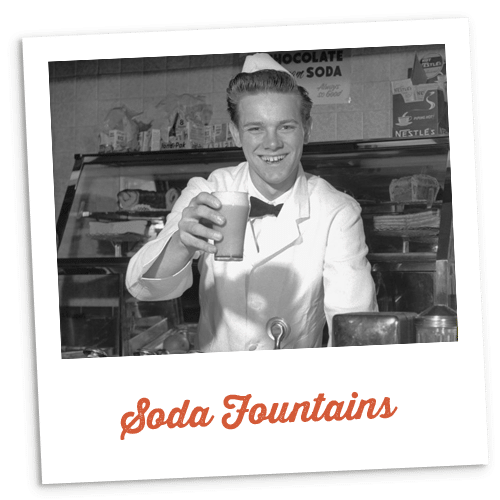
The soda fountain once served as a communal watering hole for teenagers and teetotalers. You could hang out at the bar while a soda jerk made you an egg cream or a “black and white.” Couples could sip a single milkshake through two straws. In an age where fewer people are drinking alcohol, the soda fountain just might be the third space we need again.
Wearing a Watch
Most of us don’t need a watch to tell time anymore — we’ve got phones for that — but it’s still one of the handiest things you can put on in the morning. Checking the time on your wrist is easier to do than fishing a phone out of your pocket, and makes for less of a disruption when you’re interacting with others. A watch is also one of the few accessories at a man’s disposal, and adds a touch of style and interest to your get-up. It’s a wearable bit of personality.
Sending Postcards
As much as we’ve long been advocates for handwritten letters, it seems the ship for mailed correspondence has largely sailed. If you’re close enough to someone to want to share the news of your life, neither of you likely wants to have week-long delays in discussing it. And even those who might appreciate a letter probably won’t write back, defeating the point of true correspondence. But there are a couple forms of snail mail still well-suited to our time. One is the thank you note (see below); the other is the postcard. For the postcard writer, sending one is fun and takes minimal effort. For the postcard receiver, finding one among their usual junk mail is a delight. So is the fact there’s no pressure to reply — it’s meant to be a one-way hello.
Attention Spans
Thanks to short form video and social media dopamine hits, the ability to sit with a book, focus on a task, or listen to another person has steadily atrophied. But real insight, quality work, and deep connection only come when we give something our dialed-in, undivided attention.
Dancing

Dancing is one of those activities humans have been doing for thousands of years, and up until a half century ago, it was one of the most common social pastimes. Today, adults may only dance once in a blue moon at weddings, and young people only get their groove on at homecoming and prom. The decline of dancing is particularly impoverishing for youth, as it teaches important interpersonal skills: how to weather rejection, read cues, move with another person without stepping on them, make small talk, be physically close to someone without being or feeling awkward about it — how to be more human, really.
Progressive/Walking Dinners
Progressive dinners — where each course is served at a different house — used to be a staple of neighborhood life. You’d get an appetizer at one person’s place, the main entree at another, and dessert somewhere down the street. By the end of the night, you were full, but more importantly, you knew your neighbors a little better and your street felt a little more like home.
Acquaintances
Words should mean something. Some, like “friend,” should practically be sacred. Unfortunately, friend has been bastardized by influencers who use it to describe their followers, by companies that cheerily apply it to anonymous customers, and by people who use the label for someone they say hello to in passing at church, a neighbor they borrowed a ladder from once, or a co-worker they’ll never speak to again after changing jobs. In regards to those latter situations, we do actually have a word for people you know, but not very well: it’s not friend, it’s acquaintance.
Real, Kitschy Christmas Trees
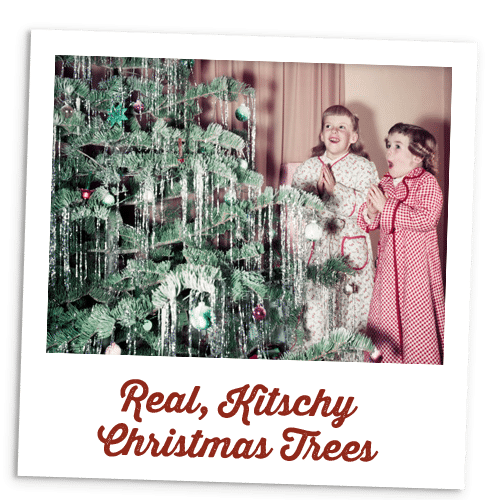
A lot of Christmas trees these days look like they were assembled for an Instagram post instead of a living room: artificial tree, matching lights, uniform ornaments. Christmas trees used to be a lot more wonderfully chaotic. You’d have handmade ornaments your children crafted in grade school and bubbler lights mixed with popcorn garland. Nothing was coordinated, nothing was curated, and somehow that made the whole thing feel more like Christmas. Bring back real trees with a hodgepodge of ornaments and plenty of tinsel. Bring back the kitsch!
Eating Sardines
Sardines used to be a grandpa staple. He’d pop open a tin, splash on a little hot sauce, and lunch was served. Well, grandpa was on to something. Sardines are convenient, full of protein, and packed with omega-3s (without the heavy metals you find in tuna and other big fish). Plus, they’re inexpensive and last a very long time. Puts hair on your chest, too!
Writing Things By Hand
In a time when most communication is typed and tapped, there aren’t many occasions that necessitate writing things out by hand. But it’s worth intentionally doing so sometimes — whether in the form of journal entries or notes — as putting pen to paper improves memory, boosts focus, enhances creativity, and strengthens learning and comprehension. It feels like a different cognitive experience and can lend a different angle to the expression of your thoughts. Plus, handwriting injects more idiosyncratic, connection-fostering personality into your missives.
Carrying Cash
Most people now walk around with nothing but a debit or credit card and the hope that every situation in life comes with a chip reader. But there are times and places where cash still comes in handy: a high school basketball game, the bait shop in the middle of nowhere, the after-hours campground fee box, the valet who deserves more than a muttered thank you. A few bills folded in your wallet is one of those small, old-school habits that still comes in clutch.
Hobbies
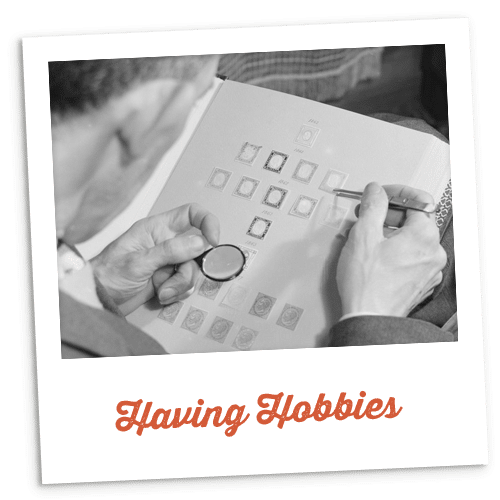
Hobbies used to be thought of as an essential component of a balanced and fulfilling life; they represented a commitment to lifelong learning and an outlet for the intellectual, creative, and self-reliant energies that didn’t get expressed in your day job. Tinkering with electronics, building model planes, messing around on the guitar — you did such things out of genuine interest and purely for personal enjoyment. Now people can’t allow themselves a pastime when they feel they should be doing something more productive, default to lower-effort entertainments, or turn what could have been a hobby into a side hustle or a performative stunt for short-form video. But a hobby done for its own sake — not for income or influence — is one of the rare ways you can lose yourself in something and come out feeling more like yourself. Click here to check out 75+ hobby ideas for men.
Farmers’ Almanac
After a 207-year run, the annual Farmers’ Almanac will cease production in 2026. But here’s hoping for a comeback. Because where else can you find out if you’re going to have a white Christmas months in advance and get tips on planting your turnips? Even if it doesn’t return, you can still get your almanac fix with The Old Farmer’s Almanac, which, for now, continues on.
Reading Poetry
The rates of reading have fallen in general, and surely some genres of literature have been hit harder than others. That definitely includes poetry. Poems certainly don’t lend themselves to our short-attention-span, easy-to-scan culture; they don’t follow a familiar format and aren’t always understandable on first blush. But that’s exactly what makes them worthwhile. They stretch our brains to think in different ways and help us reconnect with emotional and existential nuances with which we’d otherwise lose touch. Here are 20 classic poems every man should read.
Cracking Whole Nuts
From the Victorian era through the mid-20th century, it was common for hosts to offer guests a big, aesthetically pleasing bowl of whole nuts, along with nutcrackers and picks to extract their goodies. Cracking nuts around the fire or at holiday gatherings was part of the slow, social rhythm of the winter season. With the rise of pre-shelled nuts, this tradition has fallen out of favor. But nut-cracking is fun, and the fact that it takes a little effort probably makes it the most appropriate way to eat these calorie bombs — not by the pre-shelled handful, but by the well-earned niblet.
Boutonnieres

There are only a few ways to accessorize a suit. A lapel pin. A pocket square. And a once-popular but now forgotten (and worth reviving) option: a boutonniere. Most men only wear a flower in their button-hole at prom or their wedding. But you can wear a boutonniere on any occasion where you’re wearing a suit — and are feeling confident enough to make a unique style statement.
Bookplates
Bookplates — small, personalized labels pasted inside the cover of a book — were once a mark of ownership and pride. They signified that a book belonged to you and reminded borrowers who to return it to. Their bespoke designs and mottoes added individual character and expression to a personal library, giving a sense of recognizable identity to one’s collection.
Sleeping Porches
Sleeping porches were once a common feature of American homes in the early 20th century. These screened-in or open-air porches — usually on the second floor of a home — were used for sleeping during warmer months before air conditioning was common. They provided a cool, breezy place to rest on hot nights and were popular for both comfort and health reasons, as fresh air was believed to improve well-being. Jack London used his constantly. They’d still be a welcome place for a summertime slumber.
Barbershop Shaves
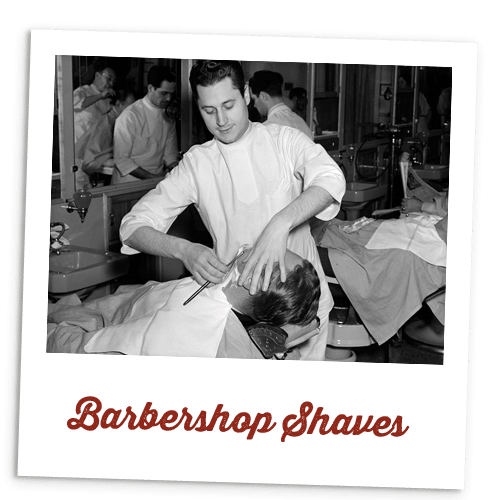
The barbershop razor shave is the facial for manly men. Nothing beats a hot towel on your face or the fragrance of shaving cream to sap the stress right out of your body. It’s also a little dangerous: letting another man hold a razor sharp piece of metal to your neck reminds you that you’re alive.
Eccentricity
There’s lots of evidence that people, on the whole, are getting less weird. Less deviant, less creative, less inclined to divert from the standard societal lockstep. It seems like we have less eccentrics than we used to — those oddballs who dressed differently, read strange books, and didn’t care if anyone understood them. Algorithms have flattened the culture, nudging us toward the same tastes and the same safe personalities. A little harmless oddity reminds us there are other ways to be human.
Dressing Up for Special Occasions
In a world that’s become blandly casual, dressing up for special occasions like weddings, parties, and nice restaurants gives life a little more texture. It makes an event not only feel more special for you, but, by contributing to the overall atmosphere, more special for others as well. Dressing up is an act of service.
Paper Maps

GPS may be efficient and convenient, but paper maps force you to really understand where you are and where you’re going. You spread one out on the hood of the car, trace a route with your finger, and suddenly the whole landscape makes sense. They don’t buffer, they don’t die at 3%, and they don’t reroute you into a lake. A good map turns getting somewhere into a small adventure instead of another task handed over to an order-barking algorithm.
Door-to-Door Knife Sharpeners
You’ve heard of door-to-door salesmen, but did you know there used to be door-to-door knife sharpeners? While the former were annoying, I feel like I would have welcomed the latter. A guy with a whetstone would knock on your door, take your dull blades, hone them on the spot, and hand them back to you all sharpened up. It’s a perfect service, because who can remember to sharpen their knives? And if you do, who wants to schlep them over to a shop? While house-call-making knife sharpeners have mostly disappeared, they might be making a comeback; I’ve employed a young man here in Tulsa who runs a mobile sharpening service, and it’s awesome!
Secrets
In an age of constant sharing and digital transparency, the idea of keeping something to yourself can feel almost subversive. But complete transparency is not an unalloyed positive, and secrets aren’t necessarily sinister — they’re essential for cultivating intimacy, mystery, and personal depth. Having a secret handshake, a private tradition, or something only you and one other person knows creates a special kind of bond. Secrets give weight to trust and texture to relationships. Not everything needs to be broadcast; sometimes the most meaningful things are the ones held closest to the chest.
Penmanship
If we’re going to bring back writing things by hand, it’s worth writing them nicely. Because we’re out of practice these days, our handwriting tends to be sloppy. But good penmanship has value: it makes your writing legible and aesthetically pleasing, and it’s simply satisfying to produce. It’s particularly rewarding to master cursive — a skill that’s especially endangered, not only in regards to writing it but even reading it.
Real Dates

Much of coed socializing these days takes the form of hanging out in groups, and even when people start going out more exclusively, their encounters may not rise above Netflix and chill. Real dates — those that follow the three P’s: planned, paired off, and paid for — would restore more intentionality to relationships. They signal commitment, effort, and respect, and they raise the stakes just enough to make the interaction meaningful. Real dates, centered on actual activities, teach you how to think ahead and make a little magic happen — skills that are foundational not just to romance, but to maturity.
Typewriters
Unlike the silent typing you do on a laptop, typewriters give your thoughts and writing a tactile, mechanical heft. You can hear and feel your sentences as you hammer them out on the keys. There’s no backspace and no instant revisions, so you’ve really got to think through what you want to write before you dive into the clickety-clack.
Bridge Nights
At the peak of their popularity in the mid-20th century, bridge nights were sometimes held multiple evenings a week. They were a staple of adult life, a communal pastime where friends and couples gathered around a card table to play, snack, laugh, and talk. The game gave people a reason to get together on the regular. In a world that’s feeling more fragmented and lonely, we could use more evenings like that — low-key, face-to-face, and anchored by something as simple as a shared deck of cards. We could also simply use more adults prioritizing having their own social life, rather than completely surrendering to their kids’ extracurriculars.
Landlines
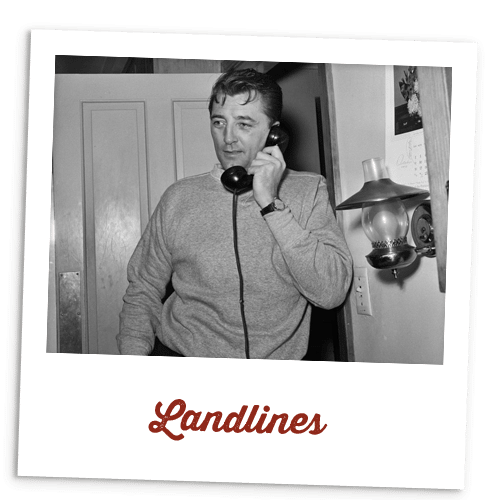
While landlines used to be ubiquitous, now only a quarter of households still have one. Cellular phones have routed them from the field. But landlines still offer some benefits: they’re easy for kids to use in an emergency, the connection is consistently clear, and sharing a single phone requires the household to function as a unit — taking messages, relaying information, and so on.
Record Players + Vinyl Records
In a world of endless, algorithmically curated streaming playlists, listening to music on a record player makes music listening feel like an event, not just background hum. The friction of having to pick out a record and delicately putting the needle on the vinyl slows things down and makes you appreciate what you’re listening to.
Valet Chairs
The valet chair (also called a butler’s chair) used to be a staple in a man’s bedroom. A chair that often included a hanger-style backrest, trouser bar, small tray for cufflinks or a watch, and even a hidden compartment or drawer, it gave your jacket, trousers, and pocket contents a proper landing zone so they didn’t end up scattered around your room or in a sad heap on the floor. It’s the perfect place to drape clothes that you’ve already worn but can wear again before washing, and it lends greater order to your daily routine.
Singing Around the Piano
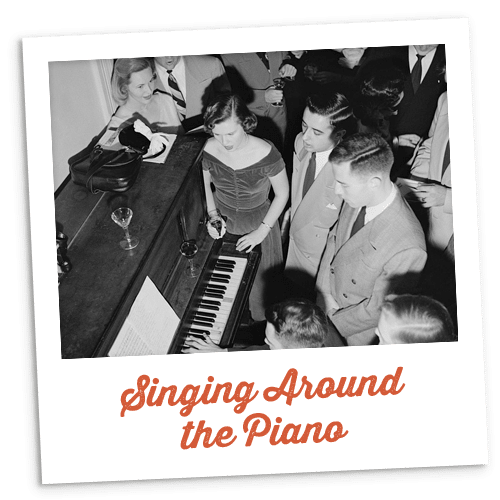
If you watch old movies, you’ll often encounter a recurring scene: people gathered around a piano, belting out some tunes. That actually happened in real life. When you didn’t have Spotify, you had to make your own music. Even in an age where we can stream any song on demand, there’s something incomparably fun, joyful, and connective about singing with other people. Of course, if we’re going to bring back singing around the piano, we’re going to need more skilled pianists among us, which means we’ll also need to revive the tradition of kids taking (and sticking with) piano lessons.
Colorful Insults
Modern insults are pretty boring — mostly the same set of expletive-laden put-downs. The 19th century did it better. Their insults had personality. They were clever. An unmannered youth might be called an “unlicked cub,” a lazy person a “slug-a-bed,” and a habitual complainer a “grumbletonian.” Here are 50 more colorful old-fashioned insults worth bringing back.
Drive-In Movies
At the peak of their popularity, 4,000 drive-in theaters operated across the country; today, only 300-400 remain. But they perhaps have more to recommend them these days than ever before; in a time where it’s hard to justify the cost of going to a standard movie theater, given how cheap and comparably immersive home viewing can be, the drive-in offers a truly different, and affordable, experience. You get to pack the whole family, along with as many snacks as you’d like, into the car for a distinctive indoor/outdoor night out.
Knowing Latin
Knowing a little Latin used to be a basic part of being educated — not because anyone expected you to converse in it, but because it opened you up to the ideas that built the Western world. Even building a small Latin vocabulary — mottos, legal phrases, liturgical language — gives you a sense of where our words came from and why they mean what they mean. It also makes reading old books more enjoyable, since authors often liked to casually drop Latin into their prose.
Safety Razor Shaving

Shaving with a safety razor turns a routine grooming task into a ritual. You have to make deliberate strokes instead of mindlessly scraping your skin with a plastic contraption; it’s rather meditative. And there are practical benefits: the resulting shave is closer and cleaner, and you save money and waste by not having to constantly buy and toss disposable razors.
Hosting and Entertaining in Your Home
In the 1970s, most households had friends over at least once a month. Since then, that kind of at-home socializing — dinners, game nights, parties — has fallen by more than half. Somewhere along the way, we got out of practice with hospitality, decided it required an unattainable standard of perfect lighting and gourmet food, got less comfortable with the intimacy of having people over, and succumbed to the inertia that eschews any fun that requires effort. But hosting something like a dinner party is a skill you can get good at with practice, brings people closer than any kind of outsourced entertainment can, and adds real zing and satisfaction to life.
Kids Playing Outside
Listen as you drive through most neighborhoods in America these days, and you might notice something missing: the shrieks and laughter of kids playing outside. It used to be you couldn’t walk down the block without dodging a game of kickball, stepping over a jumprope, or seeing a pack of bikes dumped in someone’s yard (plus a DIY bike ramp in the driveway). Now most of the action happens indoors and behind a screen. There are few things that would be better for today’s children than turning this dynamic around; outdoor play encourages kids to be independent, engage in health-promoting physical movement, and take competence and confidence-building risks.
Roasting Chestnuts on an Open Fire
Roasting chestnuts enjoyed robust popularity until a blight in the early 20th century wiped out billions of American chestnut trees, making the nuts far less available. While the trees have only made a partial return, because imported chestnuts are readily available, the practice of eating them — particularly when roasted over an open fire — is primed for a comeback. Finally bring that line in “The Christmas Song” to life. The crackle, the smell, the slow business of peeling them while they’re still steaming — it all makes for a ritual that adds some memorable texture to the holiday.
Getting Married at Home
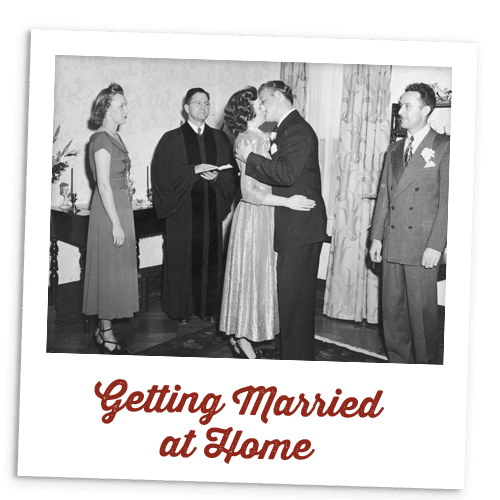
Up through the mid-1800s, the majority of weddings took place at the bride’s home rather than a church or another location. There were no sophisticated venues, no event coordinators, no anxiety about whether the flowers were Instagram-worthy. The practice was still fairly common up through the early 20th century — until weddings became increasingly elaborate and grandiose. An at-home wedding could re-root the institution, provide an appropriately homey and intimate setting for a ritual that joins lives — and families — together, and, of course, be a whole lot cheaper.
Physical Photo Albums
Most of us take photos on our phone. And that’s where those pictures usually stay — in an overwhelming, unwieldy archive perhaps thousands of photos deep. The lack of easy browsability makes it rare for us to go back and look at them. A physical photo album fixes that. Filled only with the best, intentionally curated shots, it invites you to pick it up, flip through its pages, and travel back in time.
Neckties
Neckties aren’t expected in many situations anymore — but that’s exactly what makes them meaningful. Wearing one signals intention, care, and the willingness to rise above the bare minimum. A tie is a chance to add some flair to a standard suit. It shows that you acknowledge that an occasion calls for formality. It’s a small gesture that says: this matters.
Reading Aloud to Kids
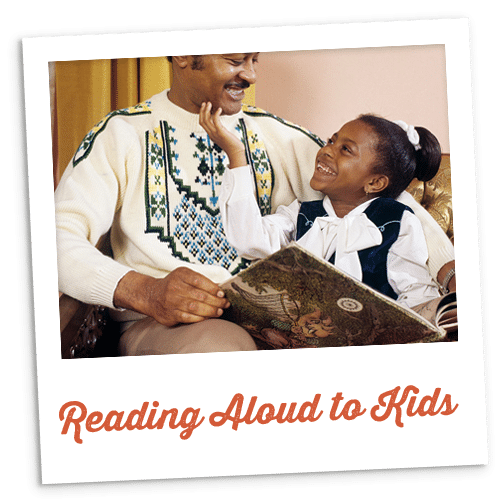
The number of parents who read aloud to their children has been dropping for decades. That’s a loss for everyone. Reading books aloud is one of the best ways to connect with your kid and increase their affinity for literature. It becomes a comforting family ritual that they’ll look back on fondly for the rest of their lives.
Sleeping With the Windows Open
Even if you don’t have a sleeping porch, you can get the benefits of a fresh-air sleep by slumbering with the windows open. In a time without A/C, when people thought well-circulated air warded off disease, doing so was the default. There are still reasons to crack open a window when you go to bed today. It does reduce the risk of respiratory illnesses, and when the air is cool, it drops your core temperature, helping you fall asleep faster. Fresh air also, in an unquantifiable way, simply makes your sleep feel more refreshing.
Love Letters
As handwritten correspondence has declined, it seems that penning any kind of note — even the kind you leave on a nightstand instead of mailing — has too. That includes love letters. We’ve traded the convenience of communicative immediacy for occasionally writing out something more meaningful and heartfelt. But none of those “Love you!” texts will end up in a shoebox or get reread when you’re old. A proper love letter gives you the chance to express your feelings more ardently than you do on a day-to-day basis and is a surefire way to rekindle the sparks of romance.
Tailoring
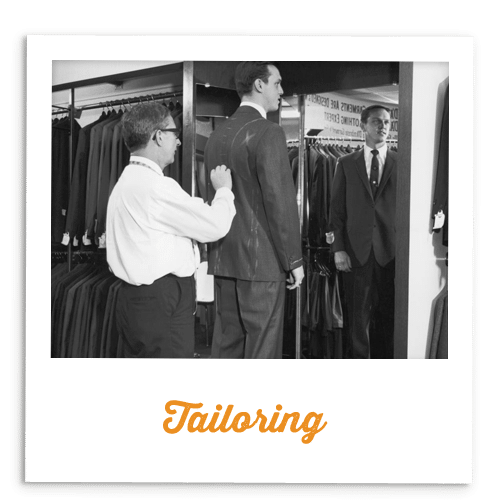
Having your clothes tailored used to be standard practice. Nobody expected a jacket or pair of trousers to fit straight off the rack. You’d take them in, get measured, and end up with a set of superior duds. The difference tailoring makes is surprisingly striking; garments look significantly sharper when they’ve been altered to fit your unique body. Sure, in an era of athleisure there are far fewer clothes that even can be tailored, but those that remain could benefit from a little snipping and stitching.
Ghost-Hunting
Kids seem a lot more literal-minded and less imaginative today. Perhaps it’s the way the internet presents the idea that every question has been solved and every rock looked under, but they don’t seem to consider the possibility of the unknown and the invisible — that there might be mythic creatures or supernatural beings — as much. Certainly when I was growing up, Scholastic’s book catalogs were filled with scary stories and how-to manuals for hunting ghosts. And dares like “Bloody Mary” were more of a thing. Wondering if there might be ghosts around makes life feel more mysterious and compelling for kids. And for adults too, really.
Stretch Limos
There was a time when riding in a stretch limo — not those gaudy Humvee limos with disco lights you see these days — made you feel like an absolute baller. ’80s limos had a vibe straight out of Lifestyles of the Rich and Famous, even if your destination was the high school prom or the reception after the wedding. You could call up the driver from the phone in the back and ask him to whisk you away to wherever you pleased, make drinks in the bar, and enjoy the ride in style. We could use more things that make ordinary people and ordinary nights feel unforgettable.
Film Cameras

Digital cameras may win on convenience, but film cameras have benefits of their own. Since every click costs you, you’re more discerning about when to break your immersion in a moment to put a lens to your eye. You get the craftsman-like satisfaction of fiddling with the camera’s settings and knowing that the final result depends on your skill. And you enjoy the anticipation of not knowing how a photo turned out until the roll gets developed — and the surprise of opening the envelope of prints, seeing the ones that really hit, and chuckling at the mess-ups.
Handwritten Thank You Notes
A handwritten thank you note is one of the easiest ways to stand out in a world where most expressions of gratitude get reduced to a quick email or text. They only take a few minutes to write, but can make someone’s day. And because hardly anyone sends them anymore, the person on the receiving end will be disproportionately touched.
Audio-Only Phone Calls
Everyone wants to talk over video these days, but there’s something undeniably awkward about those interactions: you’re often distracted by looking at yourself, and the feeling that you are — but aren’t — making real eye contact registers as off deep in the brain. Audio-only calls elevate the intimacy of a conversation above texting, without the weirdness of video. There’s something comforting and connective about just listening to someone’s voice.
Mumbley Peg
Mumbley peg was once a staple of boyhood. It’s a game that just required a pocketknife, a patch of dirt, and the ability to make said pocketknife stick in the ground with a bit of flair. Cowboys played it around campfires, soldiers played it between marches, and schoolboys played it at recess until risk-averse adults started shutting it down in the 1970s. It remains the perfect mildly dangerous game to while away the time.
Doctors in Doctor’s Coats

Doctors used to wear crisp white coats (and nurses had distinct get-ups as well). These days, most make the rounds in scrubs and Skechers. A tailored, distinguished uniform lent the medical profession a sense of dignity and gravitas — an authority that comforted patients, especially when discussing the weighty matters of health, or even life and death.
Giving Flowers With Meaning
Before the era of picking up a grocery-store bouquet and calling it good, men used to pick out arrangements for their lady loves very deliberately; each chosen flower had a special meaning and carried a message. A rose for love, a lily for devotion, a sprig of rosemary for remembrance, etc. The giver enjoyed creating the floral cipher and the recipient enjoyed (and probably sometimes felt a little anxious!) decoding it. If you’re going to say it with flowers, you ought to be really saying something.
Wood-Burning Fireplaces
Most fireplaces now run on gas. Flip a switch and you get some instant heat and ambiance. It’s convenient, for sure, but it’s not the same. Building a wood fire takes time and a little know-how, and there’s real satisfaction in getting the logs stacked just right and coaxing the first spark into a steady blaze. The smell of smoke, the crackle of the wood, the pleasure of giving the embers a poke — you can’t get any of that from a gas line.
Trunks in Attics
Every attic used to have at least one old, dusty trunk. Cracking one open was like stepping into someone else’s story. You could smell the memories. And you never knew what you might find: an old uniform, a box of medals, yellowed letters — and definitely, definitely a map to buried treasure.
The Civilian Conservation Corps

In our time of extreme partisan divide, could there possibly be two things all Americans might agree on? 1) The National Park system is awesome, and 2) The Civilian Conservation Corps ought to be brought back. During the 1930s, when jobs were scarce and the country needed a lift, the CCC put young men to work — not only in national parks, but in state parks and farmlands as well. The corps planted billions of trees, built trails and lodges, and fought soil erosion, all while learning the satisfaction of hard outdoor work, building friendships, and gaining a sense of purpose. Widespread national service, focused on improving not just our wild spaces but our crumbling urban infrastructure, might be just the thing our country needs again.


